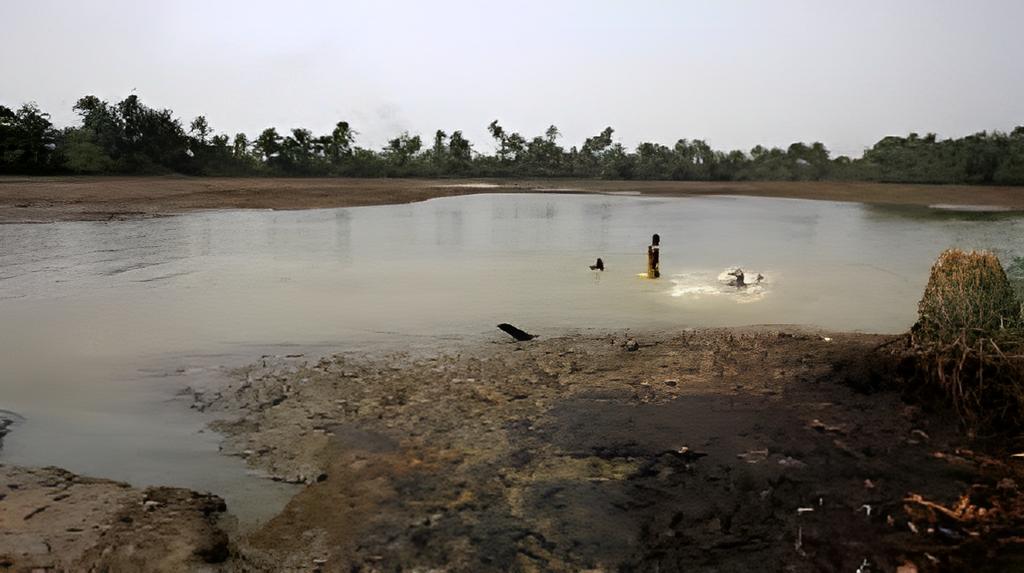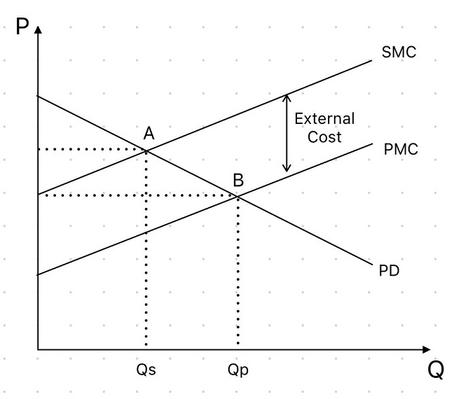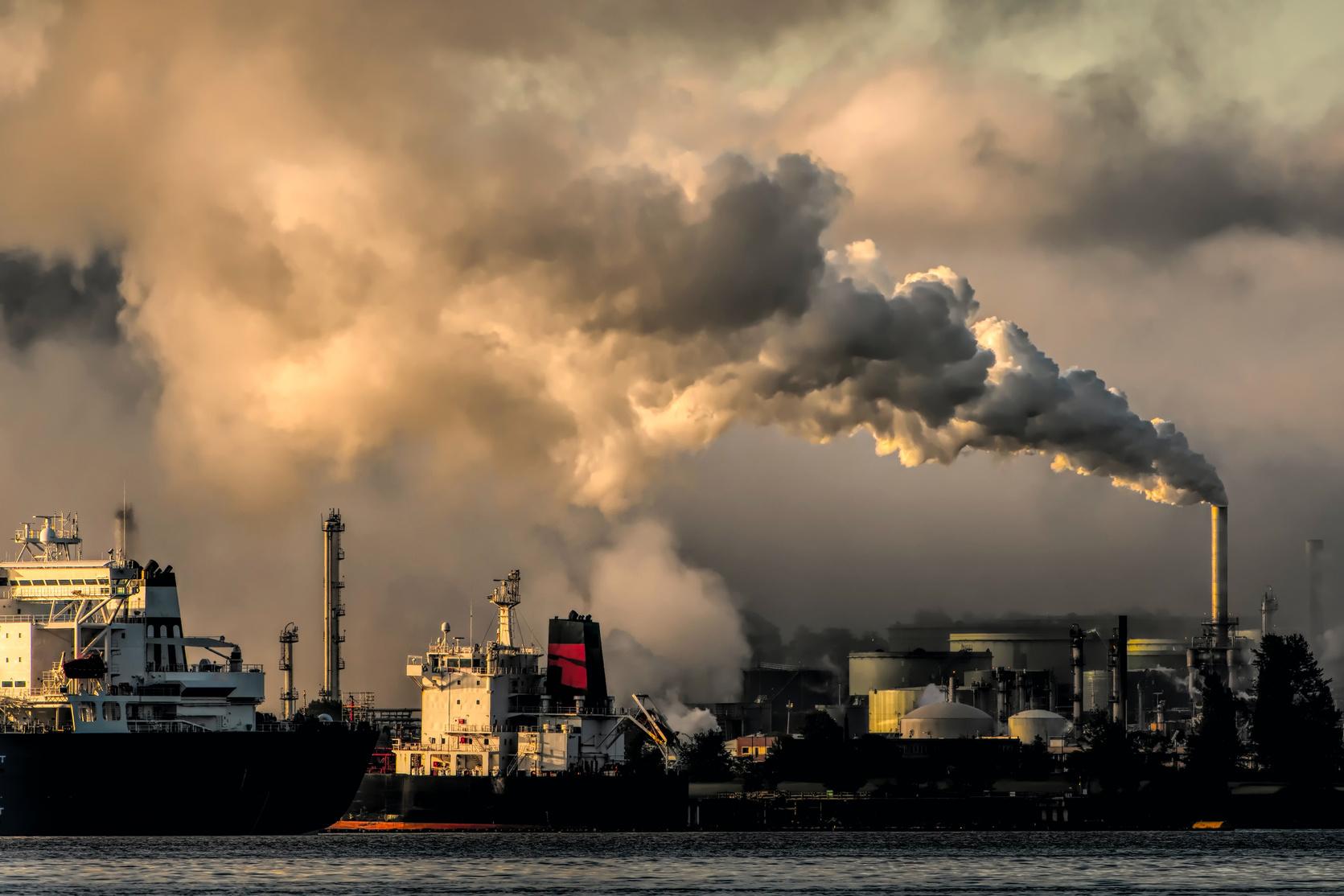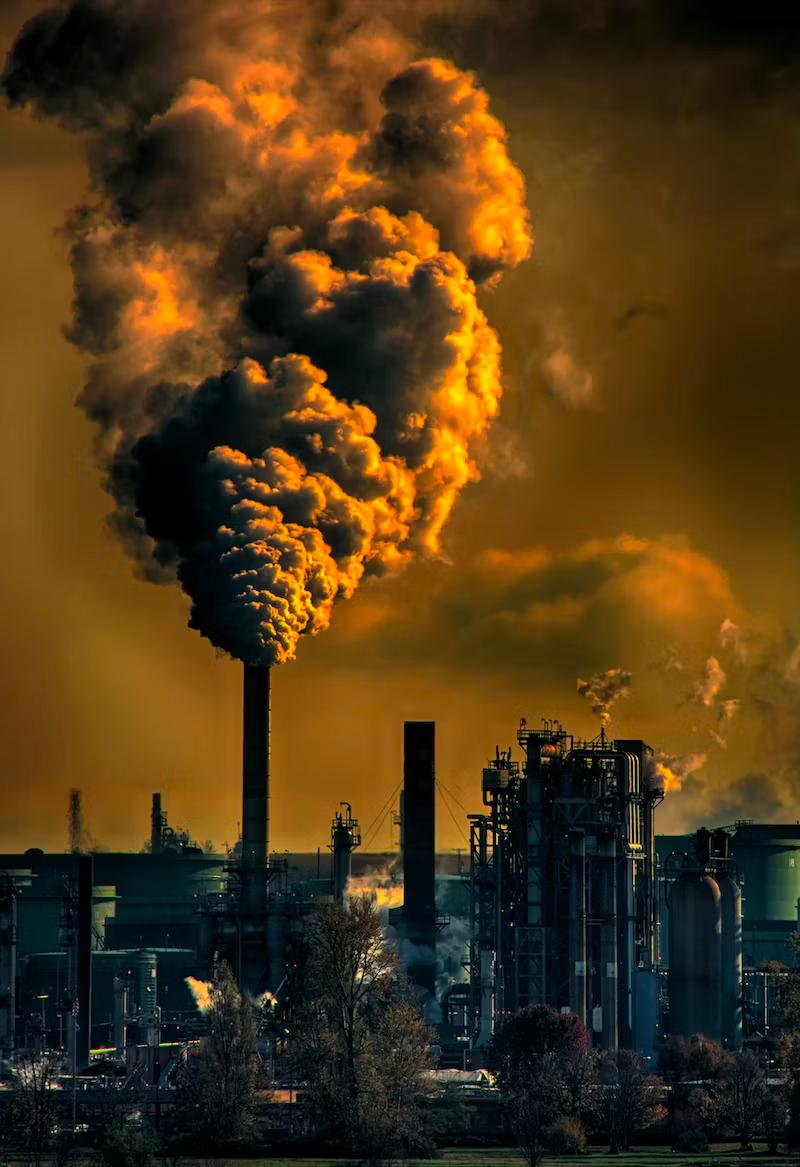
2 minute read
Externality and Market Failure
Tianhao Bao
The image below shows the occurrence of oil pollution in the Niger Delta of Nigeria. Shell is the largest oil operator in the Niger Delta, the largest oilproducing region in Africa. Due to the hundreds of oil spills that occur every year from Shell's oil production in the area, residents face high poverty rates and a severely degraded environment. The level of benzene contamination in the area's groundwater is 900 times higher than the World Health Organization's standard level, and local farmland yields are low Rivers are heavily polluted, making residents unable to rely on fishing for their livelihoods. Each year, thousands of infants and young children lose their lives due to oil pollution (Princewill & Shveda, 2022)
Advertisement

In this case, Shell's oil extraction activities in the Delta region have resulted in a series of negative impacts on society and the natural environment, giving rise to what is known as negative externalities.

However, the social marginal cost includes not only the production costs of oil but also the costs incurred by other people in society affected by the oil spill and pollution, such as medical expenses and pollution cleanup costs. Therefore, as shown in the graph, the social marginal cost line (SMC) is above the private marginal cost line (PMC), and the distance between the two lines represents the additional cost that society pays for the negative externality
Negative externalities lead to social marginal costs exceeding private marginal costs Taking the Shell oil spill as an example, the private marginal cost only includes the production costs generated during the oil extraction process, such as the cost of constructing drilling platforms and the wages of oil workers
As shown in the diagram, the intersection point A between the private demand curve PD and the social marginal cost curve SMC represents the optimal allocation of resources the society wishes to achieve. On the other hand, the intersection point B between the private demand curve PD and the private marginal cost curve PMC represents the production decision of the private sector, which is aimed at maximizing their profit. taking externalities into consideration, there is a discrepancy between the private and social objectives The optimal quantity of resources that the society wants to allocate, Qs, is less than the quantity of production Qp that the private sector provides Since the private firms or producers do not have to bear the external costs in which they are producing, therefore, when negative externalities exist, the quantity of goods provided by the private sector will exceed the socially optimal level This indicates that the existence of negative externalities will break the supplydemand equilibrium of the optimal resource allocation, leading to the so-called market failure. (

The government intervenes and regulates the market by exerting its "visible hand" to address market failures, deficiencies, and gaps to optimize resource allocation. Regarding eliminating negative externalities, the government can intervene in those companies that produce external economic effects through the traditional method of levying taxes. For example, imposing corresponding taxes on companies that cause severe pollution, namely pollution taxes Such Taxes should not be lower than the cost of pollution control (Mr. Figurant, 2022), and the production cost of the company will also increase accordingly As a result, the private marginal cost of the company will coincide with the social marginal cost. This will curb the demand for these companies products in the market and lead to a contraction in their production Ultimately, this will guide resources to be transferred to other uses, enabling more effective resource allocation to achieve the goal of efficient resource allocation.

Bibliography
Team, T.I. (2023) Market failure: What it is in economics, common types, and causes, Investopedia. Investopedia. Available at: https://www.investopedia.com/terms/m/marketfa ilure asp (Accessed: March 29, 2023)
君⼦终⽇乾乾 (2022) 微观经济学之市场失灵理论 1. 外部性, 知乎专栏. Available at: https://zhuanlan zhihu com/p/537622939 (Accessed: March 29, 2023).
Princewill, N and Shveda, K (2022) Shell escaped liability for oil spills in Nigeria for years then four farmers took them to court -and won, CNN. Cable News Network. Available at: https://edition.cnn.com/2022/05/25/africa/shelloil-spills-nigeria-intl-cmd/index.html (Accessed: March 29, 2023)
Mr
(2022)
A-6:市
政府的⼲预, 知乎专栏. Available at: https://zhuanlan zhihu com/p/488579654 (Accessed: March 29, 2023).











